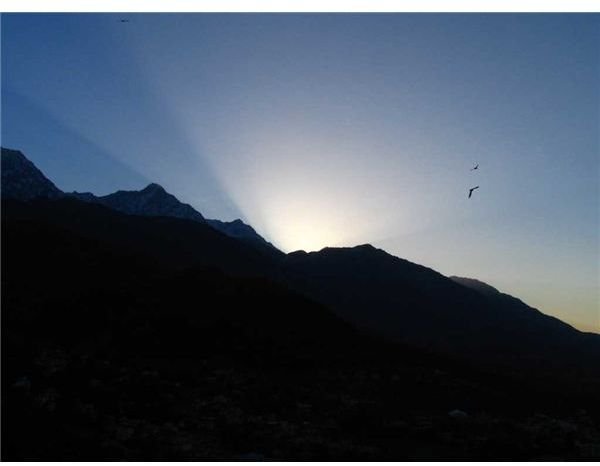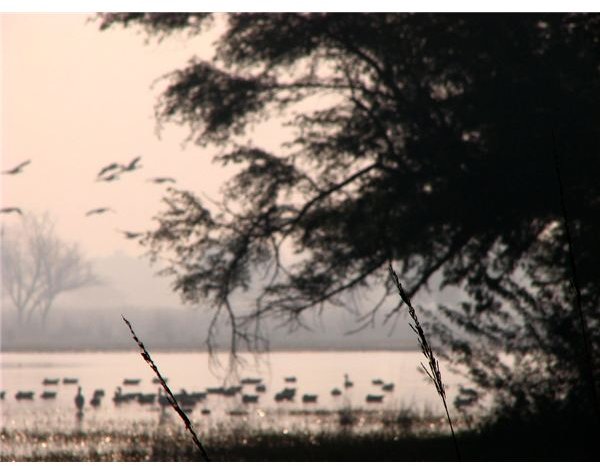Sunrise and Sunset Photography Tips - Capture the Magic Hour with These 6 Photography Techniques & Tips
The quality of your photo primarily depends on the quality of light. When shooting outdoors, one has very scant control over the quality of light. But you can still choose to utilize available light to its fullest potential by wisely choosing when and where to shoot. By far, the best quality of natural light is available during what’s often referred to as the ‘golden hour’ or the ‘magic hour’. It’s the half hour before and after sunrise as well as sunset. The light is not harsh and direct but soft and casts long shadows. The skies take on a brilliant range of hues and most importantly, the colours keep changing quickly enough to reward a photographer with multiple photographs, each unique in its own way, in a very short time.
Here are some points to keep in mind for truly amazing dawn and dusk photos.
1. Plan
I can’t stress this enough – plan what you want to shoot and reach the intended area at least 15 minutes in advance. Set up your equipment, the tripod and keep filters, if any, handy. Also a cursory scout around the place for good vantage points would help a lot.
2. Meter
Once you decide your frame, meter off the part you want sharpest. To do this, first focus on that particular area and half-press the shutter. That done, lock your focus and without removing your finger from the shutter button, re-compose the frame and shoot. One caution here is to avoid the sun in the frame while metering. The sun being very bright, you’ll end up under-exposing the rest of the photo. Meter to either side of the sun and recompose to include the sun in the final image, if you want to.
3. Bracketing
You may need (or want) to set your camera for longer exposures, depending on ambient light conditions. Also, bracketing will increase your chances of getting the right amount of foreground and background correctly exposed. For more information on bracketing, please read Bracketing: What is it and How Does it Work?
4. White Balance
Morning or evening light has more of a reddish-orange hue to it, making photos appear ‘warm’. Sometimes human faces take on a reddish tinge and appear a bit too ‘warm’. In such cases, set the white balance to incandescent, which will add some ‘blue’ to the photo and make it look more natural. Another means to the same end of to use fill flash.
5. Experiment
An important aspect to perfecting any photography technique is to experiment. Here are three things you can experiment with to get you on your way to capturing brilliant dawn and dusk photos:
1. Getting Your Focus Right: If shooting sunsets or sunrises, a narrow aperture (f/8 to f/22) will put everything from the foreground to the horizon in focus. But experiment a little and use wider apertures to keep the foreground subject in focus with a blurred rising/setting sun multicoloured sky in the background, it can give unique results.
2. Try Your Hand at Silhouettes: Usually if you meter for the sun, the foreground will be underexposed and you’ll get silhouettes. Try to have an interesting subject with a clear, sharp outline for the best silhouettes.
3. Try Using Fill Flash or Long Exposures: By keeping longer exposures or using fill flash, you can avoid silhouettes and get both your foreground subject and background well exposed. You may want to do this if your foreground subject is, say, a person or an animal.
(Click on any image for a larger view)


6. Think Out-of-the-Box
The subjects of your dawn and dusk pictures don’t always need to be of the sun rising or setting. They don’t even need to be outdoor shots, for that matter. Try photographing objects, activities or actions typical of dawn or dusk. For example, a flock of birds flying into the horizon, a steaming cup of tea near a plate of toast, children boarding a school bus, etc. Photography is an art and art means creativity. Be unique, think different and you’ll soon have that photo you’ll be proud of!

Additional Learning
To learn more about outdoor photography, including some wonderful “golden hour” pictures, please read our interview with professional outdoor photographer, Gary Crabbe.
If you’d like to share your own sunrise and sunset photos with the Bright Hub community, please feel free to do so here.
